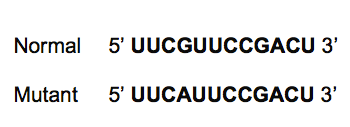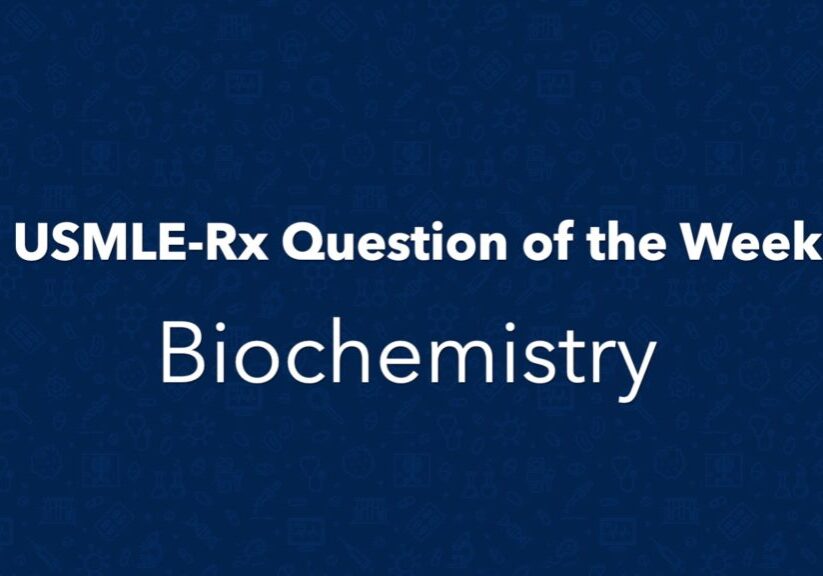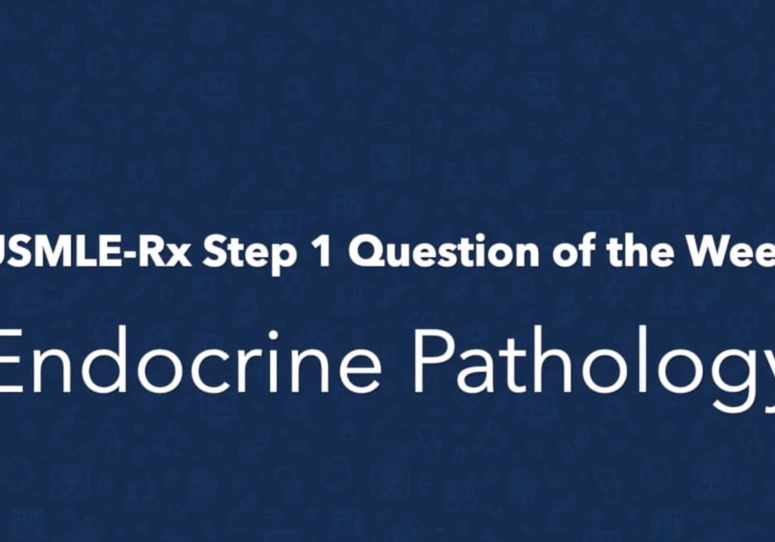Check out today’s Step 1 Qmax Question Challenge.
Know the answer? Post it below! Don’t forget to check back for an update with the correct answer and explanation (we’ll post it in the comments section below).
 A 2-year-old child has required frequent transfusions throughout his life because of anemia. A peripheral blood smear demonstrates microcytic, hypochromic red cells, with target cells and anisopoikilocytosis. After further genetic testing, the child’s spleen is removed to lessen the need for transfusions. When the suspected causal RNA is amplified and sequenced, the mutation in the image is seen at the 5′ end of one of his introns.
A 2-year-old child has required frequent transfusions throughout his life because of anemia. A peripheral blood smear demonstrates microcytic, hypochromic red cells, with target cells and anisopoikilocytosis. After further genetic testing, the child’s spleen is removed to lessen the need for transfusions. When the suspected causal RNA is amplified and sequenced, the mutation in the image is seen at the 5′ end of one of his introns.
This change is most likely to affect which of the following processes?
A. Capping
B. Hybridization
C. Polyadenylation
D. Splicing
E. Translation
———————–
Want to know the ‘bottom line?’ Purchase a USMLE-Rx Subscription and get many more features, more questions, and passages from First Aid, including images, references, and other facts relevant to this question.
This practice question is an actual question from the USMLE-Rx Step 1 test bank. For more USMLE Step 1 prep, subscribe to our Flash Facts and Step 1 Express video series. Score the best deal on all three products with a Step 1 Triple Play Bundle.




Splicing
D
The correct answer is D. Introns are noncoding regions of RNA that are spliced out of mature mRNA. Almost all introns begin and end with 5′-GU——AG-3′. A mutation in one of those nucleotides affects splicing. As the mutant shown in the diagram changes from the wild 5′-GU to a 5′-AU, the intron is prevented from being properly spliced at the appropriate site. This type of mutation is one of those found in the thalassemia vignette, as described in this patient.
A is not correct. Capping of the mRNA occurs at the 5′ end as it is being transcribed from DNA into RNA. A mutation at the 5′ end of an intron would not affect capping.
B is not correct. Hybridization is a process in which single-stranded DNA base-pairs with a complementary sequence. A mutation at the 5′ end of an intron would not affect hybridization.
C is not correct. A poly(A) tail is added to the 3′ end of heterogeneous nuclear RNA (hnRNA, the initial RNA transcript) after transcription. Poly(A) polymerase uses ATP as a precursor for adding adenosine one molecule at a time. A mutation at the 5′ end of an intron would not affect polyadenylation.
E is not correct. Introns are non-protein-coding sections of an RNA transcript. Translation of RNA into protein would not be affected by mutation in an intron.
whoah this blog is wonderful i really like studying your posts. Keep up the good work! You already know, a lot of people are looking around for this info, you could aid them greatly.